1910 American Underslung
"Traveler Toy Tonneau"
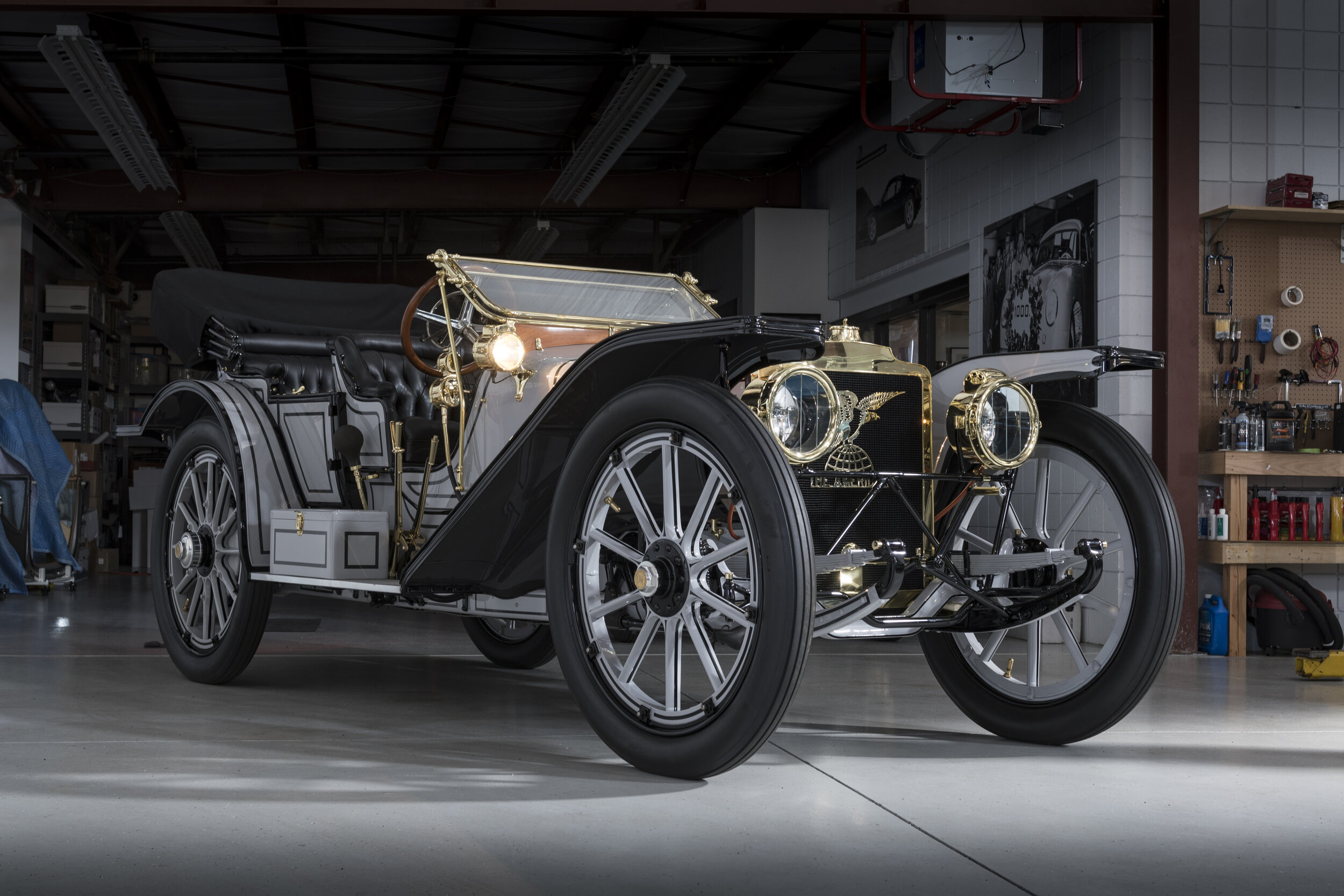

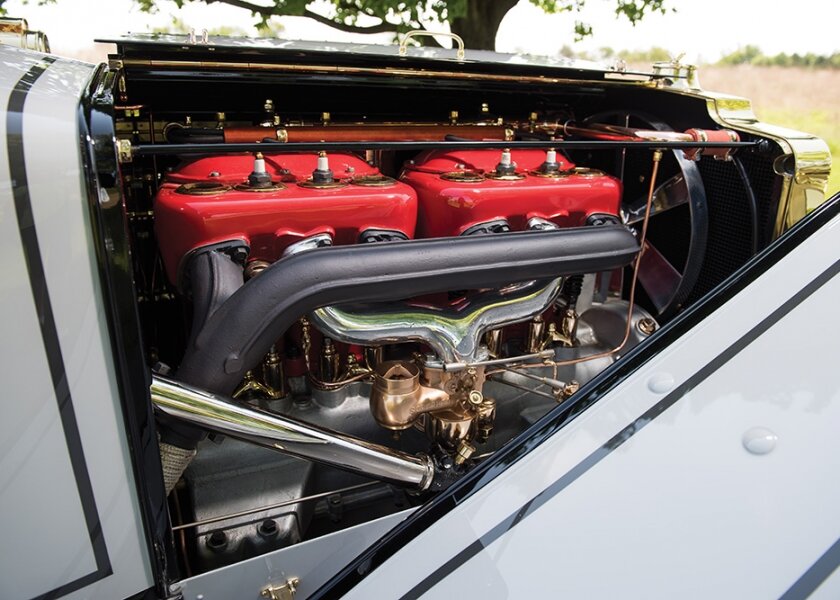
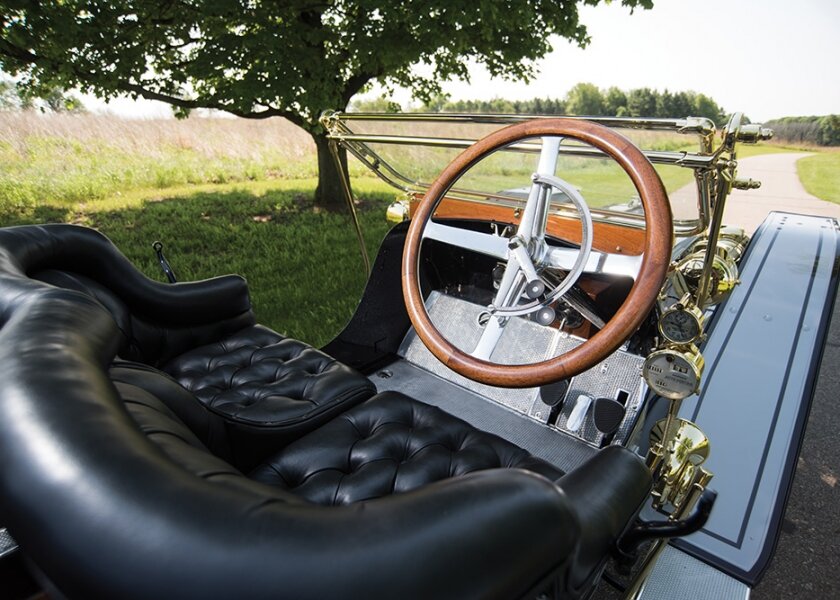
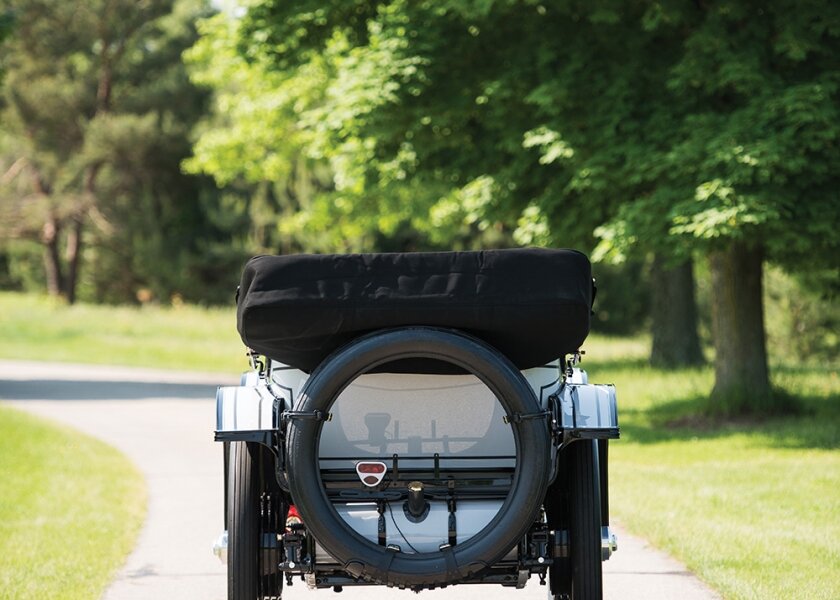
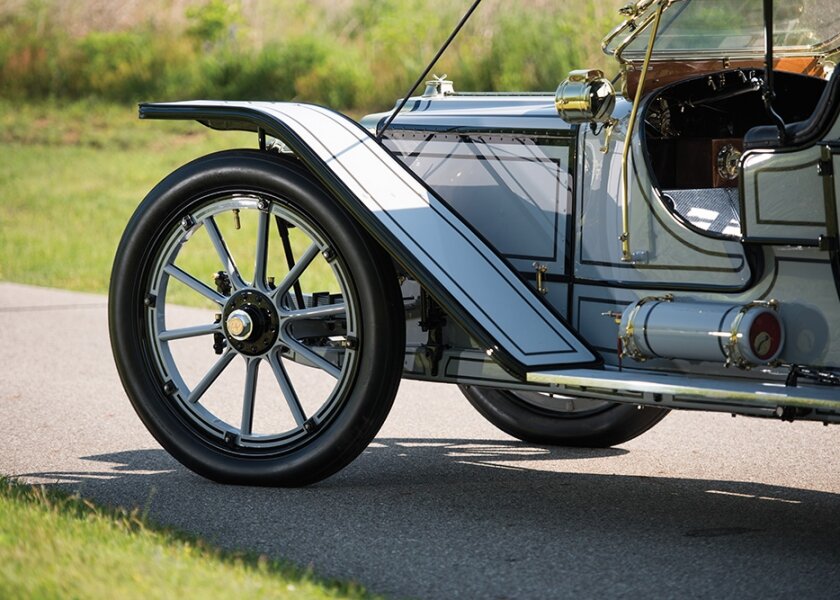
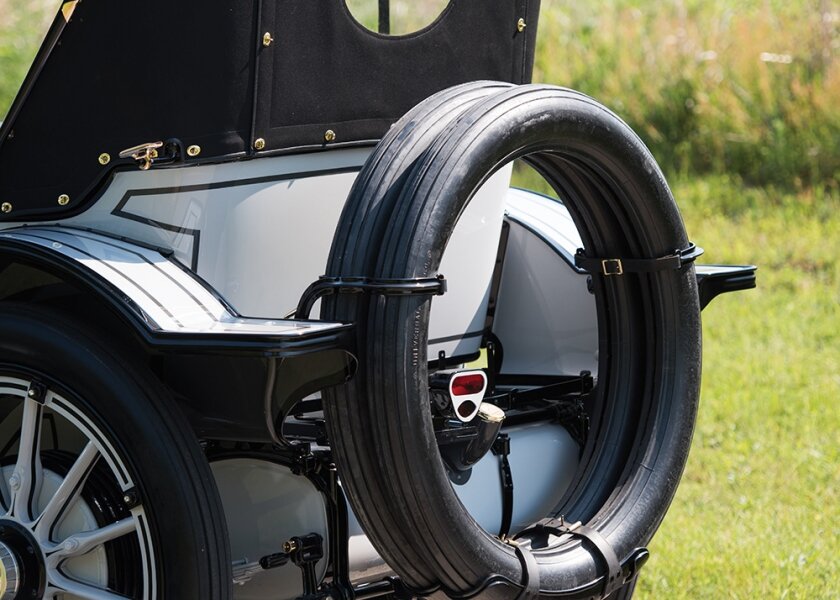
Lights: Gray & Davis Acetylene Lamps, Electric Spotlights and Tail Lights
Unlike other high-end automobiles, the Underslung was delivered with its brass adorned lights included as standard equipment. As seen on the 1901 Winton on display, Amesbury, MA-based Gray & Davis built the massive lamps. Companies like Gray & Davis worked to keep pace with the evolving technology, and one can easily decipher differences between the Winton’s kerosene lanterns and the Underslung’s acetylene headlamps.
Acetylene gas headlamps began to appear on automobiles in 1906, marking the first noticeable improvement in headlight technology. A tank of acetylene is stored in a pressure tank on the passenger side running board of the Underslung, where it is absorbed in acetone - the gas is then piped to the lamps via rubber tubes. The owner would manually light the wick inside of the headlamps, igniting the lamp. Due to the advanced lamp design on the Underslung, a large beam was projected down the road. Along with its acetylene headlights, the Underslung came equipped with electric spotlights and taillights, making it one of the earliest cars adorned with this combination of technology. The spotlights and taillights were powered by a dynamo connected to the flywheel; these lighting configurations were costly, often costing as much as a more inexpensive car.
As many roads at the time did not have adequate lighting, automobiles now required legitimate headlights to illuminate the road ahead of them, and by 1910, almost all automobiles came equipped with a more advanced form of headlights. Glare was not yet a problem, as there were few cars on the road, leading to big boastful headlamp shapes and designs to communicate status. As more and more Americans purchased automobiles, headlight intensity and glare became major topics within state and city governments, and lighting standards were subsequently introduced.
The best and most authentic of the handful of American Underslungs to survive, this car was restored by Brian Joseph, and went on to win Best in Class at the 2014 Pebble Beach Concours d’Elegance. The American was expensive and worth it: a beautifully constructed performance car that represented the best of American performance at the time. It is fast, boisterous, and proudly American, a supercar of its day!
The American Underslung - a factory-bestowed nickname of sorts, not a model name - was one of the foremost automobiles built in Indianapolis, in an era when the Crown City was another Midwestern center of motor car production. Designed by Fred Tone, it featured an advanced chassis design that ran under and dipped between the axles, lowering the car’s body closer to the ground and, therefore, also its center of gravity. This forward-thinking design came to fruition almost by accident: Fred Tone was in the factory one day, watching American frames be unloaded into the factory upside-down. “What if we used them that way?” he thought. This innovation resulted not only in beautiful, slinky styling—the E-Type of its era—but in superb handling to match the performance of brutal T-head four-cylinder engines.
American built the Underslung model from 1907 until 1914, with various engines and in multiple sizes. The four-passenger Traveler is perhaps the most desired form, on account of its dramatic four-passenger Toy Tonneau styling, with close-coupled lines incorporating a snug rear seat for two, which is tucked into the back, along with dual rear-mounted spares.
This Underslung epitomizes the Brass Era of motoring, with a number of components equipped in brass from the factory. Brass comprised the most elegant form of automobile customization at the time, allowing owners to make their car unique from the few others on the road at the time. While most automobiles of the era did not travel fast enough to require a speedometer, the Underslung was equipped with a brass Warner speedometer.
*Excerpts courtesy of RM Sotheby’s
Specifications:
Engine: 476.3 C.I. T-head Inline Four-Cylinder
Horsepower: 50 @ 1,200
Top speed: 75 MPH
Transmission: Three-speed Progressive Sliding Pinion, 15-inch Cone Clutch
Brakes: Front — None Rear — Side-by-Side 15-inch Double-Expanding Drum
Suspension:
Front - Inverted Semi-Elliptic Leaf springs, Helical Spring Buffers, Transverse Shackle
Rear - Live Axle, Leaf Springs
Weight: 2,750 lbs
Lights: Gray & Davis Acetylene Lamps, Electric Spotlights and Tail Lights


















